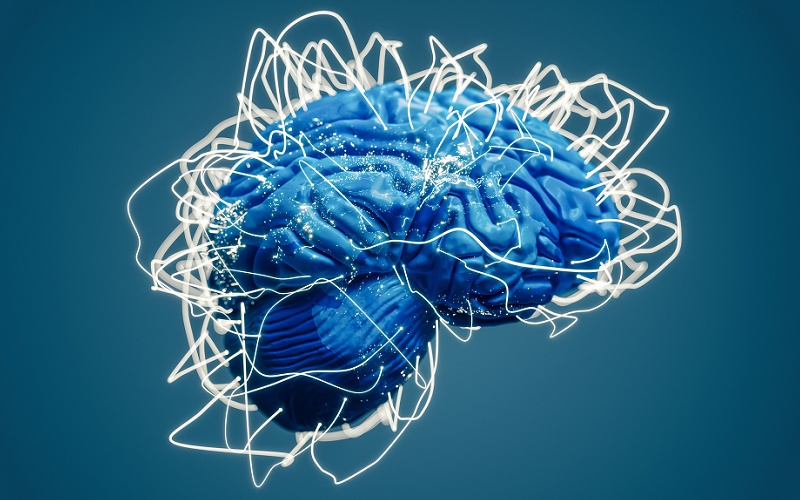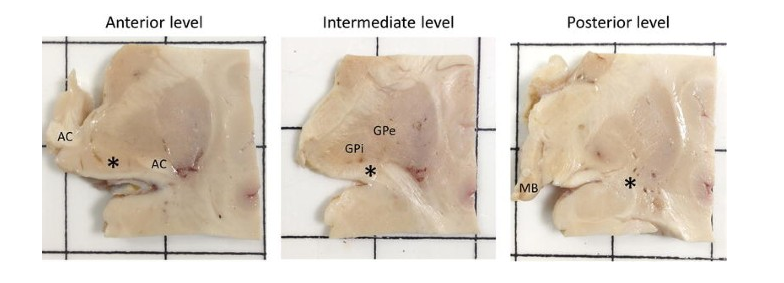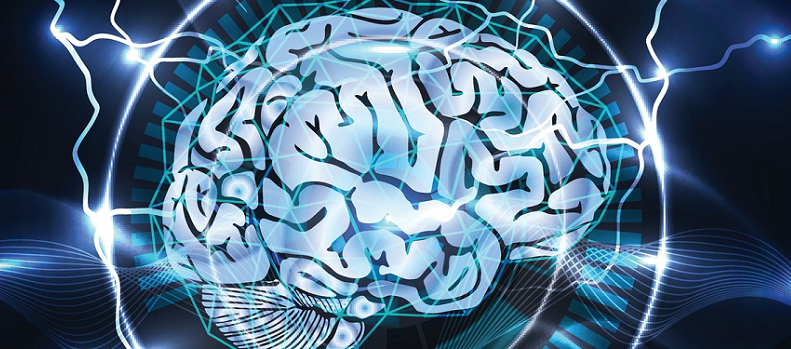
The Nucleus Basalis of Meynert, a small but powerful region nestled deep within the brain, plays a vital role in our cognitive abilities. This often-overlooked structure has a profound impact on our memory and attention, acting as a critical hub that orchestrates our daily mental functions.
Contents
What Is the Nucleus Basalis of Meynert?
The Nucleus Basalis of Meynert (NBM) is a small, yet influential, brain region that has garnered increasing attention in recent years due to its crucial role in cognitive processes, particularly memory and attention. As we navigate through our daily lives, our brains seamlessly process an overwhelming amount of information, allowing us to focus on essential tasks while filtering out irrelevant distractions. At the heart of this intricate system lies the NBM, a neural structure that serves as a critical hub connecting various brain regions and orchestrating our cognitive abilities.
Definition and Location
The NBM, also known as the basal nucleus of Meynert, is a group of neurons located in the basal forebrain, anterior to the hypothalamus and ventral to the globus pallidus [1]. It is named after the German neuropathologist Theodor Meynert, who first described this structure in the late 19th century. The NBM primarily consists of cholinergic neurons, which release the neurotransmitter acetylcholine, and GABAergic neurons, which release the neurotransmitter gamma-aminobutyric acid (GABA). These two types of neurons work together to modulate cognitive processes such as memory formation, attention, and learning.
Role in Memory and Attention
The NBM plays a significant role in memory and attention by modulating the release of acetylcholine in various brain regions, including the cortex, amygdala, and hippocampus [2]. Acetylcholine is a critical neurotransmitter for cognitive function, as it facilitates synaptic plasticity – the ability of neurons to form new connections and strengthen existing ones. This process is essential for learning, memory consolidation, and attentional control. Additionally, the GABAergic neurons in the NBM help regulate the excitatory-inhibitory balance in the brain, ensuring that our cognitive processes function optimally.
Significance in Neurological Research
Due to its central role in cognitive function, the NBM has become a focal point for researchers investigating the underlying mechanisms of memory and attention. Its involvement in various cognitive disorders, such as Alzheimer’s disease and Parkinson’s disease dementia, has spurred interest in developing targeted therapies that could alleviate or prevent the progression of these debilitating conditions.

Anatomical Overview of the Nucleus Basalis of Meynert
To better understand the role of the Nucleus Basalis of Meynert (NBM) in memory and attention, it is essential to explore its anatomical structure and connectivity with other brain regions.
Cellular Composition
The NBM is primarily composed of two types of neurons: cholinergic and GABAergic. These neurons work in concert to regulate cognitive functions, with each type playing a distinct role in modulating memory and attention [3].
Cholinergic Neurons
Cholinergic neurons are the primary cell type found in the NBM, and they release the neurotransmitter acetylcholine. These neurons are crucial for cognitive function due to their involvement in synaptic plasticity, the process by which neurons form and strengthen connections. Acetylcholine is essential for facilitating this process, enabling the brain to adapt and learn from new experiences.
GABAergic Neurons
In addition to cholinergic neurons, the NBM also contains GABAergic neurons, which release the inhibitory neurotransmitter gamma-aminobutyric acid (GABA). These neurons play a vital role in maintaining the excitatory-inhibitory balance within the brain, ensuring that cognitive processes function optimally.
Connectivity with Other Brain Regions
The NBM is a critical hub, connecting various brain regions involved in memory and attention. Its extensive network of connections enables the NBM to modulate cognitive processes across the brain effectively [4].
Frontal Cortex
The NBM sends cholinergic projections to the frontal cortex, a region responsible for executive functions such as decision-making, planning, and attention. By modulating acetylcholine levels in the frontal cortex, the NBM plays a vital role in attentional control and higher-order cognitive processes.
Amygdala
The NBM also connects with the amygdala, a key structure involved in emotional processing and memory. Cholinergic projections from the NBM to the amygdala help regulate emotional memory formation, enabling the brain to encode and store emotionally relevant information.
Hippocampus
Another critical connection of the NBM is with the hippocampus, a region essential for learning and memory consolidation. Cholinergic neurons from the NBM project to the hippocampus, modulating synaptic plasticity and facilitating the formation of new memories.
Subdivisions
The NBM can be further divided into three subdivisions, each with specific connections and functions. These subdivisions work together to regulate cognitive processes throughout the brain.
Anterior
The anterior subdivision of the NBM is primarily involved in modulating attention and is connected to the frontal cortex. This region plays a crucial role in regulating executive functions and attentional control.
Intermediate
The intermediate subdivision of the NBM is involved in memory formation and emotional processing, with connections to both the amygdala and hippocampus. By modulating acetylcholine levels in these regions, the intermediate NBM plays a vital role in the consolidation of emotional memories.
Posterior
Lastly, the posterior subdivision of the NBM is involved in the modulation of sensory processing and attention. Its connections with the parietal and occipital cortices enable the posterior NBM to influence attentional processes related to visual and spatial information.

The Role of Cholinergic Neurons in Memory and Attention
Cholinergic neurons are a crucial component of the Nucleus Basalis of Meynert (NBM), playing a pivotal role in modulating cognitive processes such as memory and attention [5].
Acetylcholine as a Neurotransmitter
Acetylcholine, the primary neurotransmitter released by cholinergic neurons, plays a critical role in various cognitive processes. It acts on both muscarinic and nicotinic receptors, which are widely distributed throughout the brain. Acetylcholine is involved in the regulation of synaptic plasticity, learning, memory formation, and attentional control, making it a key player in overall cognitive function.
Cholinergic Projections and Synaptic Plasticity
Cholinergic neurons in the NBM project to various brain regions, including the cortex, amygdala, and hippocampus. These projections modulate the release of acetylcholine, which in turn influences synaptic plasticity, the process by which neurons form and strengthen connections. Acetylcholine is essential for facilitating synaptic plasticity, enabling the brain to adapt and learn from new experiences.
Long-term potentiation (LTP) and long-term depression (LTD) are two primary mechanisms of synaptic plasticity that rely on the presence of acetylcholine. LTP strengthens synaptic connections in response to specific patterns of neural activity, while LTD weakens them. These processes enable the brain to encode, store, and retrieve memories effectively.
Cholinergic Modulation of Attention
In addition to its role in memory formation, acetylcholine also plays a crucial part in attentional control. Cholinergic projections from the NBM to the frontal cortex help regulate attention by modulating the activity of various cortical areas involved in attentional processing. Acetylcholine acts as a “gating” mechanism, determining which sensory inputs receive processing priority.
The release of acetylcholine in the frontal cortex enhances the signal-to-noise ratio, allowing relevant stimuli to stand out against a backdrop of irrelevant information. This mechanism helps the brain focus on task-relevant information while filtering out distractions. As a result, cholinergic neurons in the NBM play a vital role in modulating attention and ensuring that cognitive resources are allocated efficiently.
GABAergic Neurons and the Regulation of Excitatory-Inhibitory
While cholinergic neurons in the Nucleus Basalis of Meynert (NBM) play a crucial role in modulating memory and attention, GABAergic neurons also contribute significantly to cognitive function [6]. In this section, we will discuss the role of GABA as a neurotransmitter, its involvement in inhibitory control, and the impact of GABAergic neurons on attention and memory formation.
GABA as a Neurotransmitter
Gamma-aminobutyric acid (GABA) is the primary inhibitory neurotransmitter in the central nervous system [7]. It acts on GABA receptors, which are widely distributed throughout the brain. GABAergic neurons in the NBM release GABA, which plays a critical role in maintaining the balance between excitation and inhibition in various brain regions. This delicate balance is essential for optimal cognitive function, including attention and memory formation.
GABAergic Projections and Inhibitory Control
GABAergic neurons in the NBM project to multiple brain regions, including the cortex, hippocampus, and amygdala. These projections help regulate the activity of excitatory neurons by releasing GABA, which inhibits neuronal firing. By maintaining the excitatory-inhibitory balance within the brain, GABAergic neurons ensure that cognitive processes function smoothly and efficiently.
The release of GABA in the cortex, for example, helps regulate the activity of excitatory neurons involved in attentional processing. This inhibitory control allows the brain to focus on relevant information while suppressing irrelevant stimuli, thus facilitating attentional control and enhancing cognitive performance.
Role in Attention and Memory Formation
GABAergic neurons play a critical role in modulating attention and memory formation by maintaining the excitatory-inhibitory balance in various brain regions. In the hippocampus, GABAergic neurons help regulate the activity of excitatory neurons involved in memory consolidation. By controlling the balance between excitation and inhibition, GABAergic neurons ensure that memory formation occurs efficiently and without interference from other cognitive processes.
In addition to their role in memory formation, GABAergic neurons also contribute to attentional control. By modulating the excitatory-inhibitory balance in the cortex, GABAergic neurons help the brain allocate cognitive resources effectively, enabling it to focus on task-relevant information and ignore distractions.
References
[1] Cholinergic basal forebrain nucleus of Meynert regulates chronic pain-like behavior via modulation of the prelimbic cortex
[2] Cholinergic modulation of cognitive processing: insights drawn from computational models
[3] Nucleus Basalis of Meynert – an overview
[4] Developmental pathways to functional brain networks: emerging principles
[5] Tapping into the Default Mode Network (DMN): Unlocking Creativity and Mind-Wandering
[6] GABA level, gamma oscillation, and working memory performance
[7] Gamma-Aminobutyric Acid (GABA) – Cleveland Clinic

